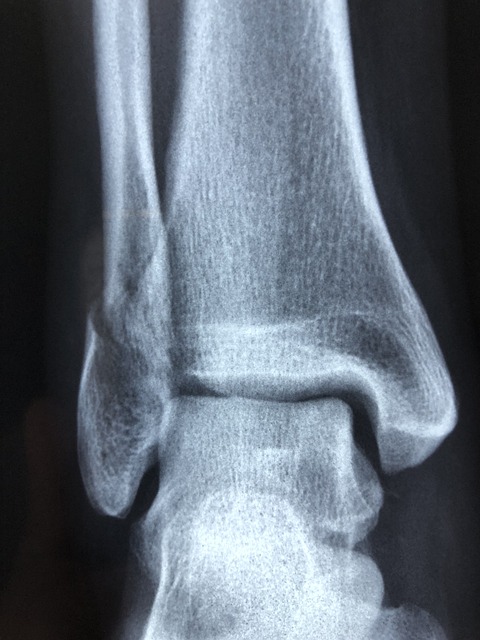Staff injury insurance is vital for healthcare facilities to protect employees from work-related injuries. It offers financial security by covering medical expenses and lost wages, enhancing clinic compliance with worker comp laws. By prioritizing staff safety, moral, retention, and risk management, clinics foster a secure environment and boost productivity in the competitive medical market. Choosing an appropriate insurer with comprehensive coverage and guidance on legalities is key to effective risk prevention and proactive workplace safety.
In today’s healthcare landscape, ensuring compliance-ready workers comp for clinics is paramount. This comprehensive guide delves into the intricacies of staff injury insurance in medical settings, exploring crucial aspects like understanding workers’ comp for medical staff and the legal requirements for compliance. We discuss benefits of comprehensive coverage, best practices for risk management, and tips for selecting the right insurance provider. By mastering these elements, healthcare clinics can foster a safe environment and protect their operations with effective staff injury insurance strategies.
- Understanding Workers Comp for Medical Staff
- The Role of Staff Injury Insurance in Clinics
- Ensuring Compliance: Legal Requirements
- Benefits of Comprehensive Coverage
- Selecting the Right Insurance Provider
- Best Practices for Risk Management
Understanding Workers Comp for Medical Staff

Workers compensation, often abbreviated as WC or workers comp, is an essential aspect of protecting medical staff in clinics and healthcare facilities. It provides coverage for work-related injuries, illnesses, or deaths, ensuring that employees receive fair compensation and access to medical benefits. For clinics, managing staff injury insurance is crucial to maintaining a safe and compliant work environment.
Medical staff, including doctors, nurses, and support personnel, face unique risks on the job. Whether it’s due to heavy lifting, exposure to infectious diseases, or long hours, these risks can lead to injuries or occupational health issues. Workers comp insurance offers financial protection by covering medical expenses, lost wages, and in some cases, disability benefits if a staff member is unable to work due to a work-related incident. Understanding the scope of coverage and ensuring compliance with local workers comp regulations is vital for clinic administrators to foster a supportive and secure workplace culture.
The Role of Staff Injury Insurance in Clinics

In the healthcare sector, ensuring the well-being and safety of clinic staff is paramount. This is where Staff Injury Insurance steps in as a vital component of comprehensive risk management for medical facilities. This insurance policy offers financial protection and peace of mind by covering medical expenses and lost wages for employees injured during their work. Given the nature of healthcare work, which often involves physically demanding tasks and potential hazards, having such coverage is not just beneficial but essential.
Staff Injury Insurance plays a crucial role in maintaining a positive work environment and fostering employee trust. By providing financial support during recovery, clinics demonstrate their commitment to their workforce’s long-term health and well-being. This proactive approach not only enhances staff morale but also contributes to higher retention rates and improved productivity, ultimately benefiting the clinic’s overall success in a highly competitive medical market.
Ensuring Compliance: Legal Requirements

Ensuring compliance with legal requirements is paramount for any medical clinic, especially when it comes to staff injury insurance. Every jurisdiction has its own set of regulations dictating the minimum standards for worker compensation, and these rules are designed to protect both employees and employers. Failure to comply can result in significant fines, legal repercussions, and damage to a clinic’s reputation.
Medical facilities must meticulously review and understand their obligations under local, state, or national laws. This includes provisions related to reporting work injuries, providing prompt medical treatment, and ensuring adequate coverage for staff injury insurance. Regular audits and updates to compliance policies are essential to stay ahead of changing legal landscapes, thus safeguarding the clinic and its workforce from potential risks and disputes.
Benefits of Comprehensive Coverage

Comprehensive worker’s compensation coverage is a cornerstone of responsible clinic management, offering numerous advantages that extend beyond legal obligations. By providing robust staff injury insurance, clinics demonstrate their commitment to employee welfare and create a safer working environment. This holistic approach ensures that medical professionals and support staff are protected against unforeseen injuries sustained on the job, fostering a culture of care and resilience.
Moreover, comprehensive coverage can streamline clinic operations by alleviating financial burdens associated with workplace accidents. Medical expenses and lost wages can be covered promptly, allowing healthcare providers to focus on patient care rather than administrative tasks. Such proactive measures not only strengthen employee morale but also enhance the clinic’s reputation as an employer of choice in the competitive healthcare industry.
Selecting the Right Insurance Provider

Selecting the right insurance provider is a crucial step for clinics aiming to be compliance-ready. When it comes to staff injury insurance, specifically tailored for the medical field, several factors should guide your decision. Look for providers that understand the unique risks associated with healthcare settings and offer comprehensive coverage that addresses liability, medical expenses, and lost wages.
Research their track record, financial stability, and customer service reputation. Ensure they provide flexible policy options that align with your clinic’s size and specific needs. The right insurance partner should also offer guidance on compliance regulations, helping you navigate the complex landscape of worker’s compensation laws to ensure ongoing protection for both your staff and business.
Best Practices for Risk Management

To maintain a compliant and safe work environment, clinics should prioritize risk management practices that extend beyond legal requirements. This includes regularly reviewing and updating safety protocols to address emerging risks associated with medical procedures and staff interactions. One effective strategy is conducting thorough risk assessments for common workplace hazards, such as slip-and-fall accidents, equipment malfunctions, and exposure to infectious diseases. These assessments should identify potential dangers, evaluate their likelihood and severity, and propose mitigating measures tailored to the clinic’s specific needs.
Additionally, fostering a culture of safety where staff are encouraged to report incidents, near misses, and health concerns is paramount. Regular training sessions on workplace safety, proper use of personal protective equipment (PPE), and emergency response protocols can empower employees to proactively manage risks. Implementing robust communication channels ensures that all team members understand their roles in risk management, fostering a collaborative environment where everyone takes responsibility for preventing staff injuries and promoting a comprehensive medical practice insured against potential staff injury claims.
